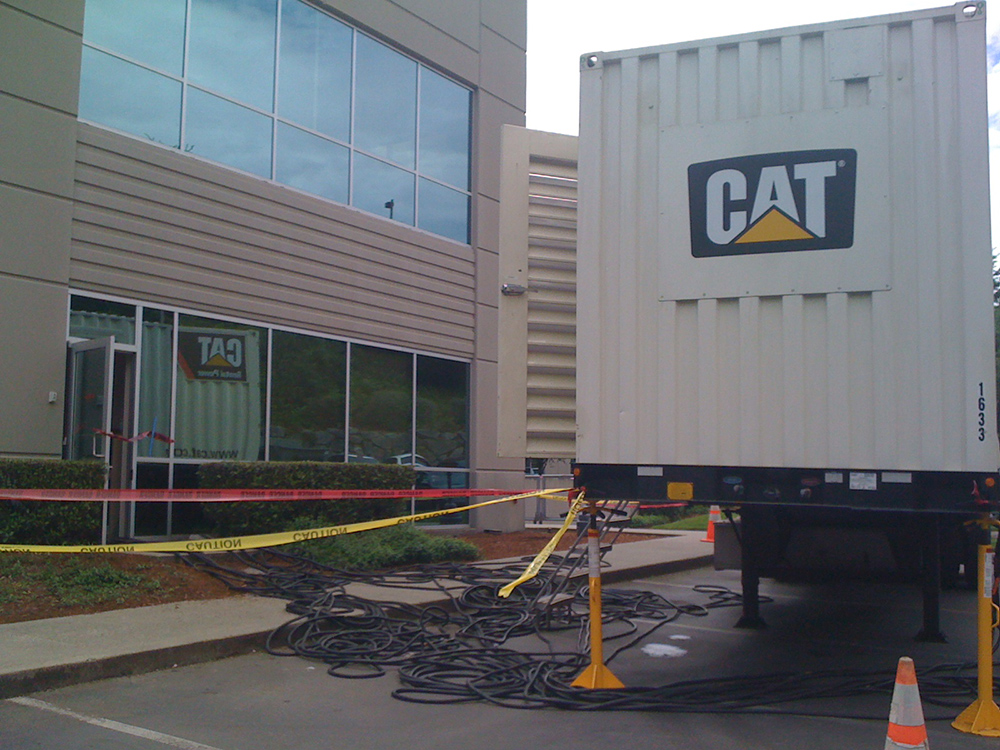Emergency Power Generator in Place During Outage
“Did you get the phone call?”
That was the first question to me from our receptionist when our building lost power over the weekend of June 25 and 26, 2011. On Monday morning, I walked into an office with no power, no telephones, no computers, and, at that point, not a lot of employees. This was not your typical winter outage, where everyone in the city is having the same problem. Rather, on this morning, the problem was a faulty breaker that cut power to just our office building. Over the course of the next five days, as building management worked to mitigate and fix the problem, our office dealt with multiple outages and instances of low power. While plans to deal with such an emergency were in the works, the situation provided a real-life test of our emergency procedures.
So what did we learn?
Critical elements of an Emergency Preparedness Plan
Is an effective communications strategy clearly identified?
What happens when email, servers, and phones are down? How do you keep your employees apprised of a developing situation without email or office phones for them to call? And how do you keep on top of critical projects and in contact with your clients?
The answer: an old fashioned phone tree, cell phones, and social media!
An effective phone tree contains employee phone numbers with a reasonable number of employees assigned to each supervisor to allow for rapid communication. It is important that the phone tree include both primary contact and backup phone numbers; had I turned on my cell phone before getting to the office, I would have known not to take the bus into work that morning!
While telephones and email were critical to our internal communications, we quickly realized that we also needed to let our customers or clients know we were still open for business. Because our telephone system is dependent on building power, we directed the phone company to route all calls to a cell phone used by our receptionist. In turn, the receptionist routed the calls to employee cell phones. We also used smart phones to email critical contacts about our power outage.
We also used social media to communicate with our clients. We posted updates to our website, blog, LinkedIn profile, and Facebook page; these channels allowed us to inform the world of a critical situation even when our servers were down. Our external website is hosted on off-site servers rather than our internal server, in part to diffuse the impact of localized hazards.
Is the plan all-inclusive?
Our experience left us with further motivation to create an emergency plan that will take into account the many different types of emergencies that might occur. While you can’t prepare for every situation that might arise, an effective plan should consider all types of emergencies that are a potential for your region and include appropriate responses for each.
Have a Disaster Mitigation Plan
Should I send employees home? Can I keep them busy without power?
Each employee is likely to have at least a couple of hours of filing or other non-computer or phone-dependent work to keep them busy while determining whether it is necessary to send them home. Determine beforehand how you will deal with deadlines and employee workloads when the emergency keeps your employees from working for days at a time.
What about building management?
If your company operates out of a leased space, as we do, your plan should include communication with building management to coordinate the emergency response. Do not assume your building management personnel know your operational priorities. We found that our building management team made assumptions about scheduled power outages that did not factor in some of our specific power needs.
In the end, both your Emergency Response Plan and your Disaster Mitigation Plan should have clearly defined tasks. Each task needs a person assigned who fully understands how their efforts coordinate with all other tasks. As in your daily operations, communication is the key to effectively responding in times of emergency: communication with your staff, communication with your clients or customers, and communication with building management and/or service providers. Prepare now to minimize the pain of response to an emergency later!

